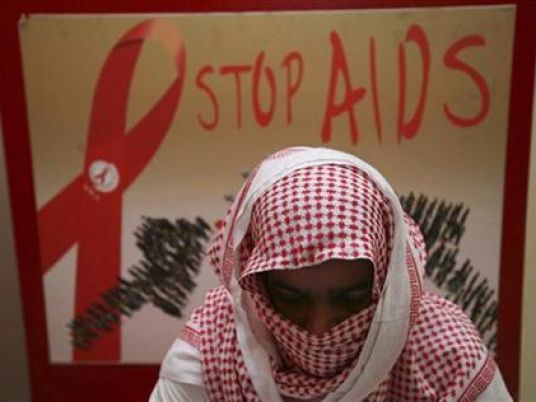While the prevalence of HIV/AIDS in Egypt is low, its treatment, care and support are in need of a bolster. This is because a combination of factors – overpopulation, poverty and illiteracy – increase the risks of an epidemic, say human rights and public health workers.
The United Nations Program on HIV/AIDS (UNAIDS) has estimated the rate of HIV in Egypt at less than 0.1 percent, or the equivalent of roughly 10,000 infected people. However, according to the National AIDS Program, just 2612 cases of HIV/AIDS were detected between 1986 and 2006. 722 of these were foreigners, mainly Africans, and were deported. The first case of HIV/AIDS was detected in 1986. Official accounts put heterosexual intercourse as the main mode transmission of the disease for those cases detected, followed by homosexual intercourse.
The National AIDS Program is responding to the current situation through both prevention and care, via anonymous voluntary counseling and testing sites, pilot sexually transmitted infections clinics, and awareness campaigns. However a number of gaps remain, which mainly make the life of HIV/AIDS patients more difficult.
Follow up is one of the main gaps highlighted by HIV/AIDS activists. "More support is needed at all levels," says Raguia el-Garzawy, a medic and the head of the public health and discrimination unit at the Egyptian Initiative for Personal Rights. "There is not enough follow up for people living with HIV/AIDS. There is no scheme organized for follow up. There is a problem with medication for example – if the treatment received by someone does not work, he will not know what to do."
El-Garzawy adds that the Government Fevers Hospital, the main site where people living with HIV/AIDS receive their medication, has certain drawbacks such as a shortage of medication and failures in testing devices.
Zein el-Abedin el-Taher, manager of the National AIDS Program, cites action taken by the program in the context of follow-up operations, such as easy access to free drugs, psycho-social support and the prevention of mother to child transmission of the disease. "At the beginning, we thought there was no need for more than one site for drugs distribution in Cairo. Now there are four sites, in Cairo, Alexandria, Tanta and Minya," he says.
He adds that there are now CD4 and viral load tests every six months, which had not previously been available at such a frequency. These tests detect the development of the virus in the patient’s body. The main medication line is locally manufactured and the Ministry of Health has made it permanently available. "There was a shortage only once in 2007 because of a problem with the company providing the main drug," says el-Taher. Roche, the Swiss manufacturer of Viracept, one of the main medication lines, had to recall the product from all markets as it had been accidentally contaminated with a carcinogenic substance.
While the official national response can be described as active in finding adequate interventions, the stigmatization of HIV/AIDS on a social level remains a predicament for people affected by the disease in Egypt. "The Tumors Institute refuses to receive cases living with HIV/AIDS even if they come with a tumor diagnosis," says el-Garzawy. The institute is the only national center that tackles tumor diseases.
"There are no proper places where they [people living with HIV/AIDS] can go to seek treatment if something happens to them," says el-Garzawy, which, according her, is a clear instance of discrimination against HIV/AIDS patients. "Doctors and nurses have an exaggerated fear of people living with HIV/AIDS which makes their work very difficult," she says, basing her information on testimonials by patients she works with.
El-Taher does not accept such criticism. "This cannot be a problem with trained hospitals and clinics under the National AIDS Program. This could be the case in private hospitals or in university hospitals that have not been trained well enough to deal with HIV/AIDS patients," he says. The program, according to el-Taher, has been active in raising awareness amongst religious leaders as well as high-risk groups with whom the majority of organizations are hesitant to work due to their illegal practices.
Another problem identified by the HIV/AIDS Theme Group, a coalition of Egyptian and international agencies working on the issue is lack of solid information about risk factors and HIV serology, within a surveillance system that contains significant gaps. This stands in the way of making realistic predictions about the status of an epidemic and any necessary response.
The National AIDS Program is supported by international donors such as the United States Agency for International Development (USAID), which has been involved both financially and technically.




